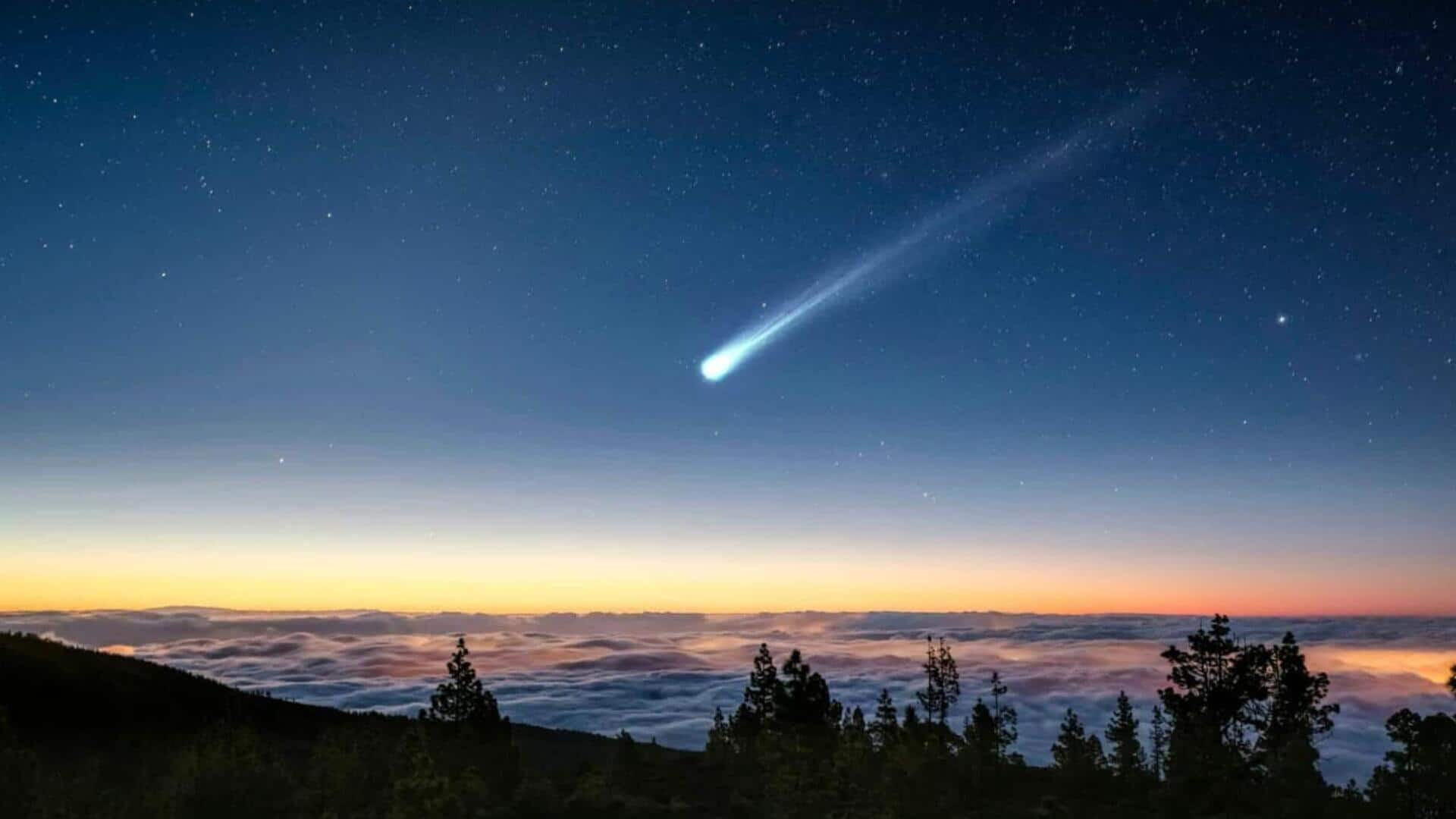
Two comets pass Earth this month: When, how to watch
What's the story
Two bright comets, C/2025 A6 Lemmon and C/2025 R2 SWAN, are set to make their closest approaches to Earth later in October. The former was discovered on January 3, 2025, while the latter was detected for the first time on September 10, 2025. Both comets have long-period elliptical orbits around the Sun and will be visible with binoculars or telescopes.
Visibility
How to spot the comets
Comet SWAN will be visible only in early evenings after sunset, while Lemmon can be seen just before sunrise. However, both comets appear near the Sun from Earth's perspective, giving a small window each day to spot them. The two celestial bodies look similar in images, with green gas clouds and long tails trailing behind them.
Closest approach
When will the comets come closest to Earth?
Comet SWAN will come closest to Earth on October 20, passing within 38.6 million kilometers of us. Meanwhile, Lemmon will swing by on October 21, coming within 88.5 million kilometers of our planet. Astronomers hope these close encounters will provide valuable insights into long-period comets, which have orbits longer than 200 years and originate from the Oort Cloud at the solar system's edge.
Celestial journey
Why are these close encounters important?
Long-period comets like Lemmon and SWAN likely formed near gas giants Jupiter and Saturn before being hurled to the solar system's outskirts billions of years ago. This preserved them in a deep freeze. As they approach the Sun, their ices start to sublimate, revealing materials that have barely changed since the solar system's formation. Lemmon is currently visible in the Northern Hemisphere but will hide behind the Sun in November and December.
Viewing advice
Lemmon is currently visible in Northern Hemisphere
As of now, Lemmon is just below the Big Dipper's bottom. If weather conditions aren't favorable on October 20, The Virtual Telescope Project will livestream both comets from dark skies in Manciano, Italy. Astronomers recommend using binoculars and observing from a dark area away from light pollution to catch a glimpse of these celestial wonders.